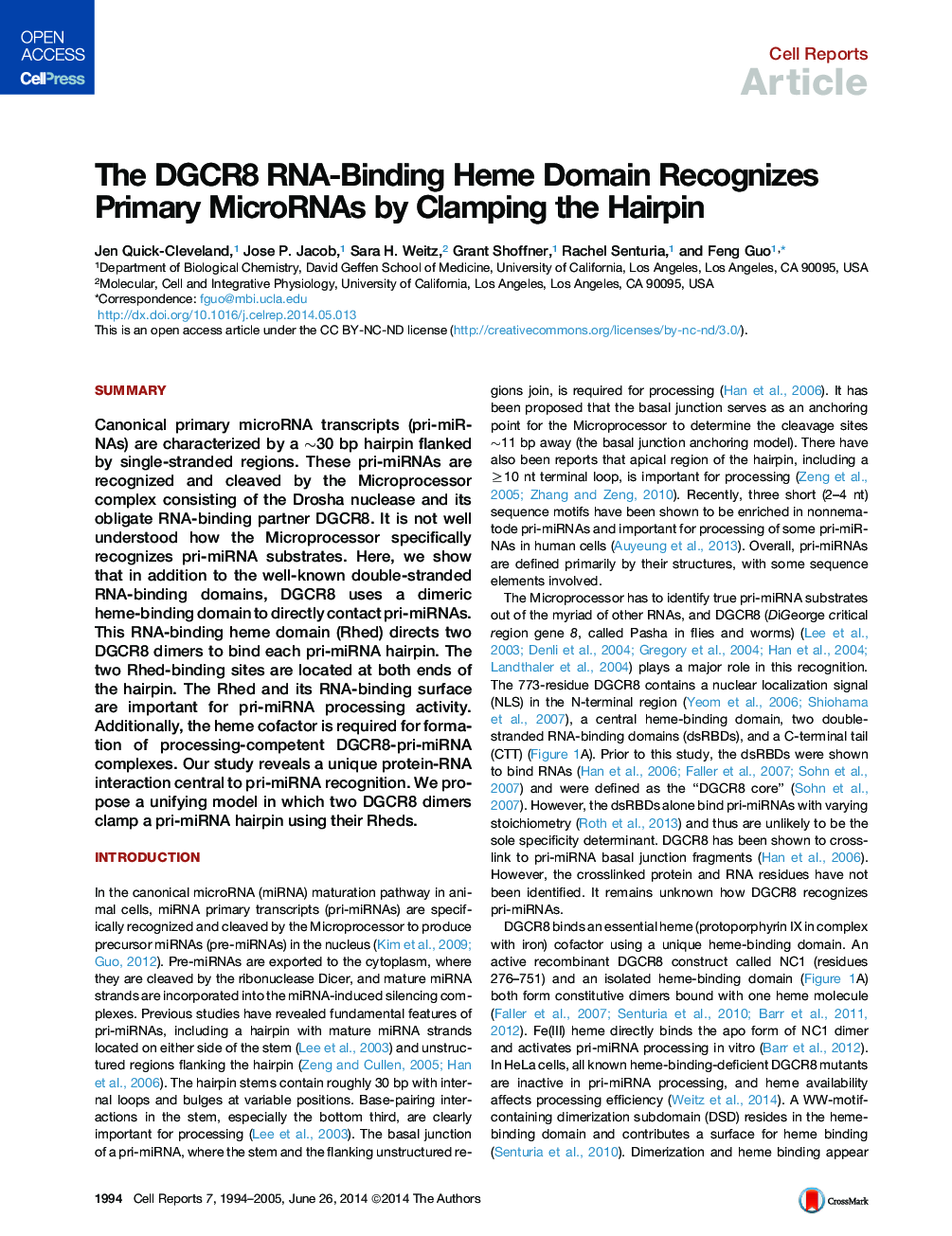| کد مقاله | کد نشریه | سال انتشار | مقاله انگلیسی | نسخه تمام متن |
|---|---|---|---|---|
| 2041340 | 1073156 | 2005 | 12 صفحه PDF | دانلود رایگان |

• A unique RNA-binding domain is uncovered in the pri-miRNA processing factor DGCR8
• The RNA-binding heme domain (Rhed) binds the ends of the pri-miRNA hairpin
• The Rhed and its RNA-binding surface are important for pri-miRNA processing
• The molecular clamp model explains recognition of all pri-miRNA structural features
SummaryCanonical primary microRNA transcripts (pri-miRNAs) are characterized by a ∼30 bp hairpin flanked by single-stranded regions. These pri-miRNAs are recognized and cleaved by the Microprocessor complex consisting of the Drosha nuclease and its obligate RNA-binding partner DGCR8. It is not well understood how the Microprocessor specifically recognizes pri-miRNA substrates. Here, we show that in addition to the well-known double-stranded RNA-binding domains, DGCR8 uses a dimeric heme-binding domain to directly contact pri-miRNAs. This RNA-binding heme domain (Rhed) directs two DGCR8 dimers to bind each pri-miRNA hairpin. The two Rhed-binding sites are located at both ends of the hairpin. The Rhed and its RNA-binding surface are important for pri-miRNA processing activity. Additionally, the heme cofactor is required for formation of processing-competent DGCR8-pri-miRNA complexes. Our study reveals a unique protein-RNA interaction central to pri-miRNA recognition. We propose a unifying model in which two DGCR8 dimers clamp a pri-miRNA hairpin using their Rheds.
Graphical AbstractFigure optionsDownload as PowerPoint slide
Journal: - Volume 7, Issue 6, 26 June 2014, Pages 1994–2005